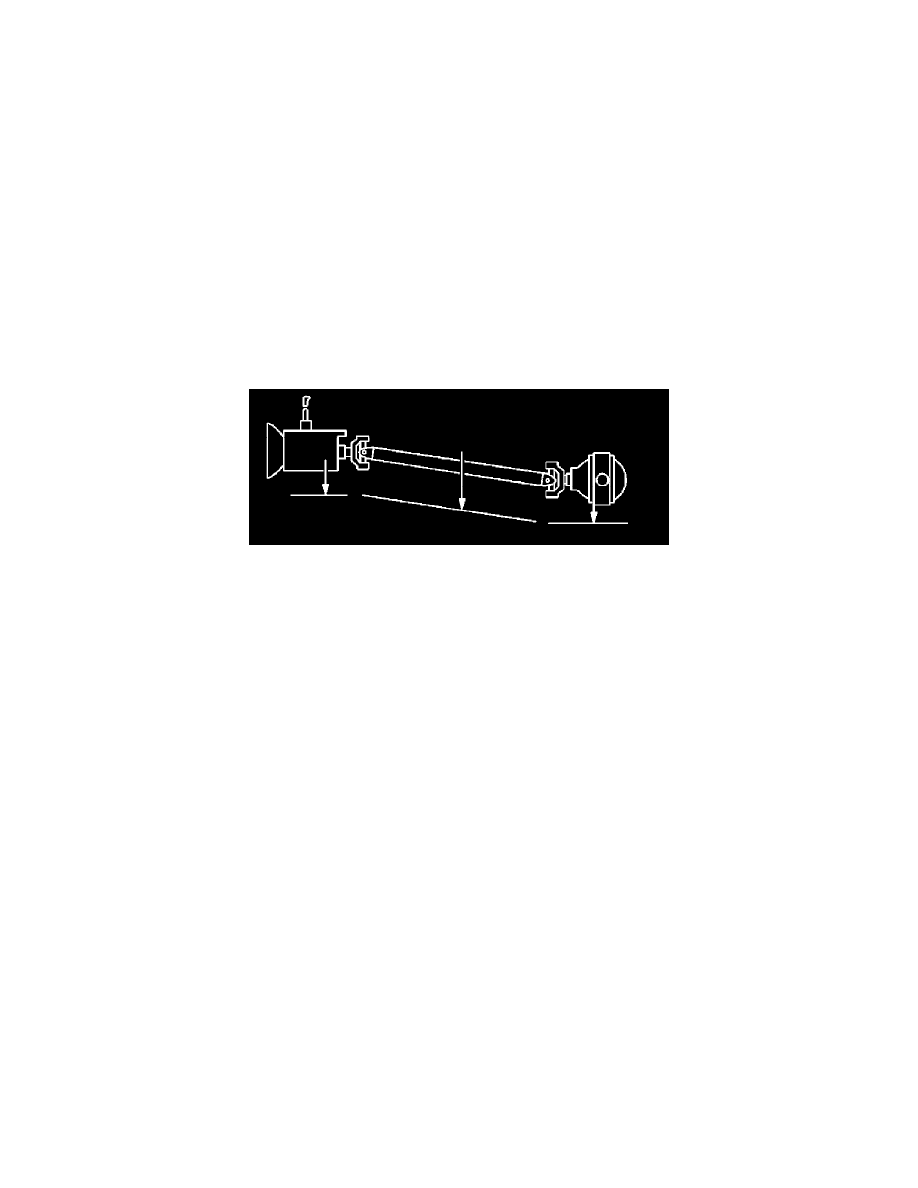XL-7 4WD V6-3.6L (2008)

The working angle of a U-joint is formed by the difference between the angles of any 2 shafts that intersect. Propeller shaft systems that have 1 U-joint
have 1 working angle; systems with 2 U-joints have 2 working angles, and so on. In a typical 1-piece prop system with 2 U-joints, the working angles
are front (1) and rear (2):
^
The front working angle (1) is formed by the intersection of the transmission or transfer case output shaft and the prop shaft.
^
The rear working angle (2) is formed by the intersection of the prop shaft and the drive axle pinion.
NOTE:
When measuring and evaluating U-joint working angles, observe the following:
^
No U-joint working angle should be equal to zero. An angle of 0 degrees will cause premature U-joint wear due to a lack of rotation of the needle
bearings in the U-joint.
^
No U-joint working angle should exceed 4 degrees.
^
Prop systems containing only 1 U-joint: The U-joint working angle should be within the range specified in this procedure.
^
Prop systems containing 2 or 3 U-joints: The 2 U-joint angles each formed with the prop shaft that contains 2 welded yokes are designed to cancel
each other during operation. These 2 working, or canceling U-joint angles should be equal to each other within the range specified in this
procedure provide effective cancellation of the U-joints.
^
Prop systems containing 3 U-joints: The U-joint angle formed by the prop shaft that contains only 1 welded yoke is an odd, or non-cancelled
angle. This working angle should be within the range specified in this procedure.
^
Always orientate the J 23498-A so that it faces the same side of the vehicle for each measurement taken.
^
Be sure to accurately record the measurements taken on a diagram, similar to the one shown.
Measurement Procedure
NOTE:
If it is necessary to use the J 23498-20, or equivalent adapter, first verify the accuracy of the J 2349820, or equivalent by inspecting the angle of an
accessible joint using the J 23498-A, or equivalent, then inspecting the same joint angle using the J 23498-20, or equivalent.
1. For vehicles with solid axles, ensure that the vehicle has a full tank of fuel or the equivalent amount of weight in the correct location to simulate a
full tank. The weight of 3.8 L (1 gal) of gasoline is approximately 2.8 kg (6.2 lb).
2. Raise and support the vehicle. On vehicles with solid axles, ensure that the drive axle is supported at ride height-vehicle body supported by
suspension components. Suspension travel will not affect driveline angles on vehicles with direct-mounted drive axles. Ensure the wheels are free
to rotate.
3. For vehicles with 2-piece prop shaft systems, inspect the lateral alignment of the propeller shafts before proceeding:
a. From underneath the propeller shafts, look down the length of the shafts from front to rear. Inspect the alignment of the shafts to each other.
b. From underneath the shafts, if the propeller shafts are not aligned to each other in a straight line, then the lateral alignment of the prop shafts
needs to be adjusted before proceeding.
The propeller shaft support bearing assembly can be relocated slightly to one side in order to improve the alignment of the shafts. Ensure that
you do not create a ground-out condition against the exhaust or any other component.
4. Place the transmission in NEUTRAL.
5. Clean any corrosion or foreign material from the U-joint bearing caps.
6. Remove any of the U-joint bearing cap snap rings that may interfere with the correct placement of the J 23498-A, or equivalent.
